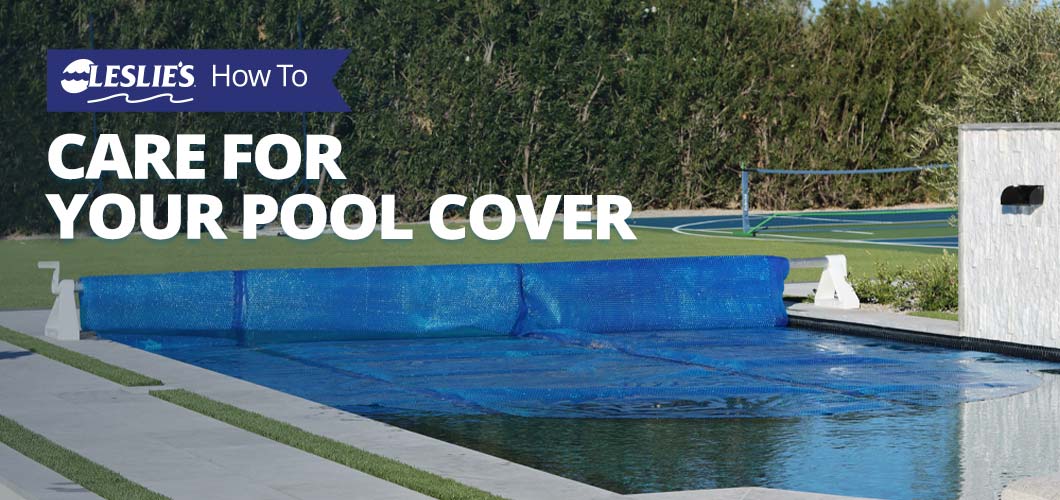
How to Care for Your Pool Cover
From weekly water chemistry tests, to occasional equipment repairs, every pool owner knows the time and effort that goes into taking top-notch care of your swimming pool. Which is why it's so important to also take the best care of your pool cover. Proper pool cover maintenance is vital to protecting your pool and keeping the water clean and healthy. So let's dive in and discuss the best practices for pool cover care and how to clean your pool cover.
Automatic Pool Covers
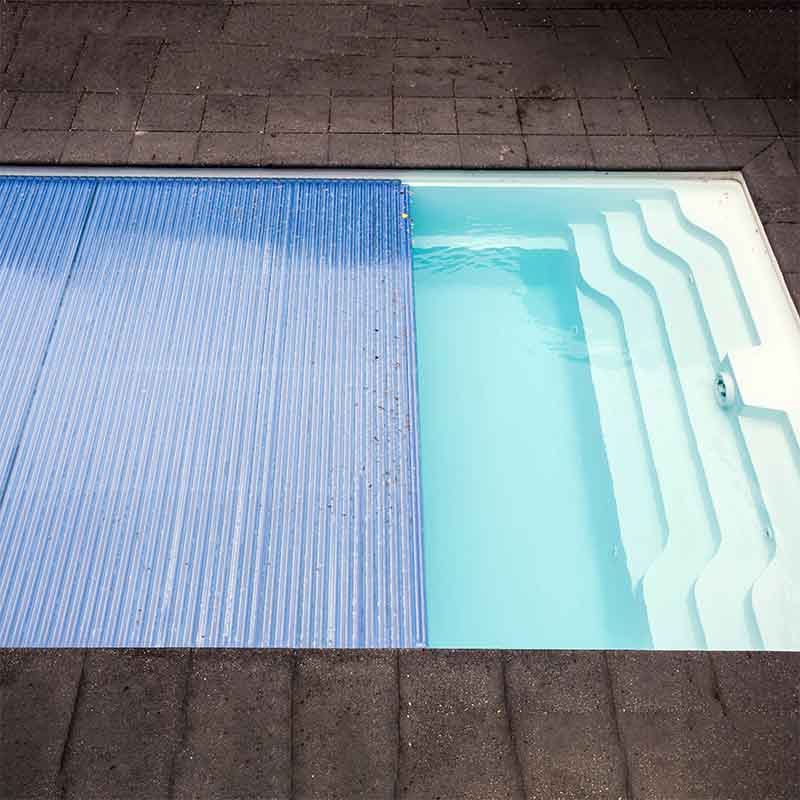
Known for their convenience and security, automatic pool covers are increasingly popular among pool owners. Automatic pool covers, also known as retractable covers, provide seamless coverage over your pool, and keep debris and contaminants out of the water. Additionally, because of their solid vinyl material, automatic covers act as excellent solar covers during colder months. But now, let's get into how to care for your automatic pool cover.
Check the waterline
Before using an automatic cover, check your pool's waterline and verify it is at the half-way point of your skimmer. Too much water in your pool puts pressure on the cover and can flood the cover's motor. While on the flip side, not enough water will cause the cover to sag, which can pull it off the side tracks and damage the cover reel.
Remove debris
Unlike the sturdier winter or safety covers, automatic covers are not made to hold large amounts of debris. Too much weight on an automatic cover will cause it to sag and even cave in completely. Use a telescopic pole and pool brush to gently remove debris or snow from the cover as soon as possible. For excessive water accumulation, place a cover pump on top of the cover to drain the water.
Clean every 3–6 months
The more you use your automatic cover, the more it's exposed to the chemicals in your pool water, like chlorine. Long-term exposure to caustic chemicals can deteriorate and severely damage the cover. To prevent chemical buildup, cleaning your pool cover is vital. Use a soft-bristled pool brush to gently scrub away any residue, then rinse off the cover with a garden hose. Use a cover pump to remove the excess hose water from the top of your cover.
While you're cleaning the cover, also inspect and clean the cover reel, motor housing, and tracks. Use a teflon-based lubricant on the cover reel and tracks to ensure smooth movement, and tighten any loose screws or connections.
Repair tears
Check for holes or tears in your cover every time you use it, and keep a patch kit on hand at all times. Tears not only compromise the effectiveness of your cover, but if left untreated, serious tears can cause you to replace your entire automatic cover.
For more information about pool cover repairs, check out our blog post, How to Repair a Pool Cover!
Keep pool uncovered after adding chemicals
Leave your pool uncovered for at least two hours after adding water chemicals. Caustic chemicals like chlorine can be harmful to your cover and cause early aging and decay. Keeping your pool uncovered after adding chemicals not only prevents damage to your cover, but also reduces how often you need to clean it.
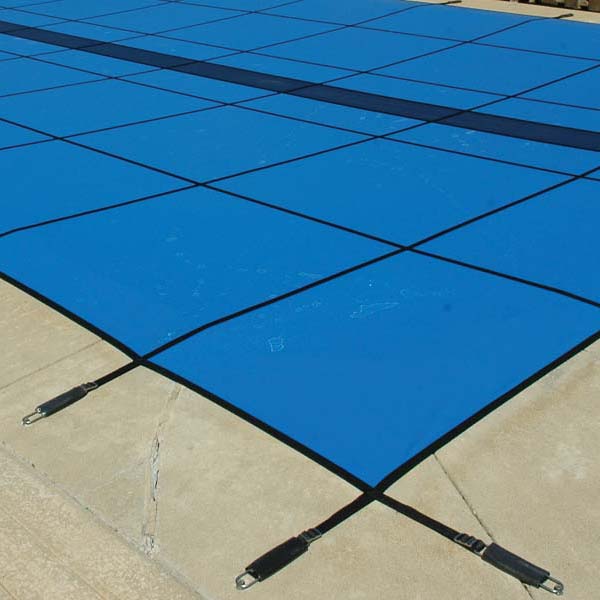
Solid & Mesh Pool Covers
There are many types of solid and mesh pool covers on the market. Whether you have a heavy duty mesh safety cover, a solid winter cover, or a leaf net cover, it's important to properly maintain the cover to ensure optimal performance. Because winter and safety pool covers are typically left on the pool for months at a time, they are more at risk of damage from the elements and exposure.
Want more information about safety and winter covers? Take a look at our in-depth blog post, Winter Pool Covers vs. Safety Pool Covers, for the differences between these two types of covers.
Check the waterline
Just like automatic pool covers, solid and mesh covers function best when your pool's waterline is halfway up the skimmer. Heavy debris, water, or snow, combined with a low waterline, adds excess strain to the cover. While checking on your pool's water level during the winter may not sound fun, it can make a big difference in the longevity of your cover.
Remove debris
Remove large amounts of snow, debris, or water from the cover quickly to avoid straining and damaging the cover. Even though winter and safety covers are durable, they are not designed to hold excessive weight. Use a cover pump to remove water and melting snow from the top of the cover, or use your pool brush and pole to gently push debris off.
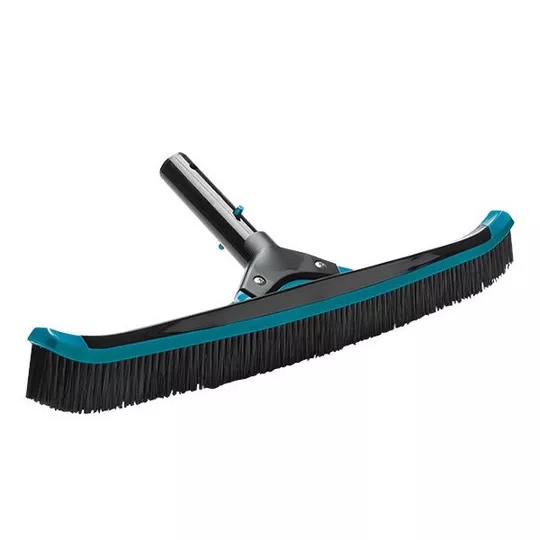
Clean every 3–6 months
Unless your solid or mesh cover gets particularly filthy while on your pool, it's best to save the cleaning until you take the cover off for the season. Cleaning your pool cover while it's on your pool can be tricky, especially if you use a strong cleaning detergent or bleach.
Once the cover is off your pool, spray it down with a hose and use a pool brush to gently scrub off any residue or debris. Then rinse the cover off and set it out to dry in the sun. It's important to let the cover dry thoroughly before folding and storing it. A damp, folded cover is like a 5-star hotel for bacteria and mold!
Repair tears
Frequently check the cover for any rips or tears throughout the season. Fallen branches or other sharp objects can puncture the mesh cover and reduce the strength of the cover. Any sign of rip or tear should be repaired immediately with a patch kit.
Check spring tension
Periodically check your cover's spring tension to ensure it stays snug on your pool. The spring tension should be set to at least half compression to guarantee a strong seal. A loose cover is not only a safety concern, but can also limit draining and cause more strain on the cover.
When you remove your cover for the summer, clean out and cover the anchor sockets to ensure proper anchor function next time you use it.
Leave pool uncovered after adding chemicals
Typically, solid and mesh pool covers are only used in the winter time when your pool is closed. Which means you likely won't add as many chemicals to the water as you do during the summer. However, it's still important to protect your cover by limiting its exposure to pool water chemicals. If possible, leave the cover off your pool for at least an hour or two after adding chemicals.
Solar Pool Cover Care
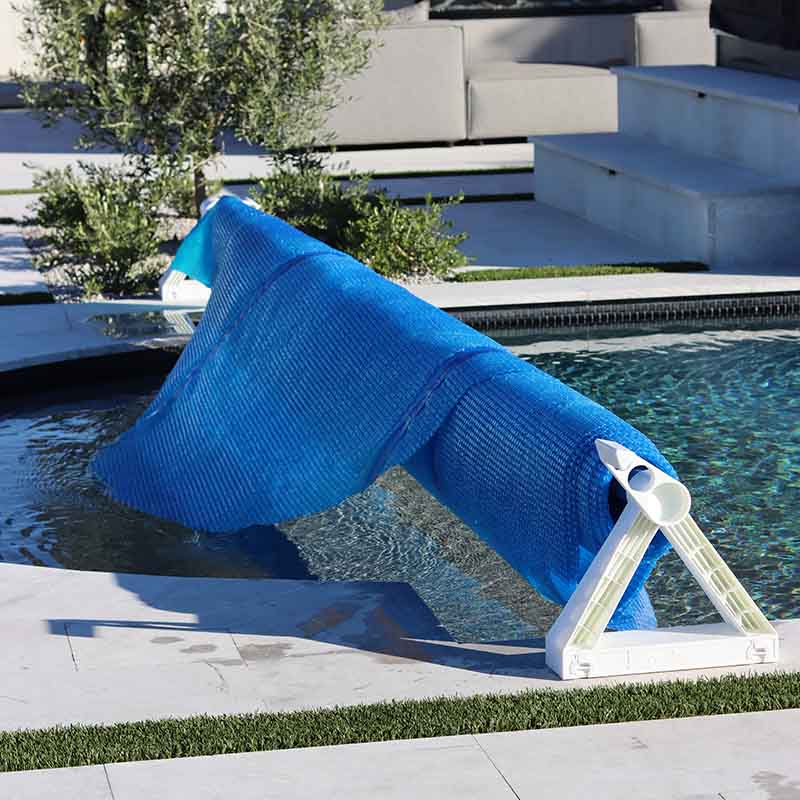
A popular choice among pool owners living in the sunbelt, solar pool covers are affordable, easy-to-use, and offer many benefits to your pool. While solar covers may look like giant pieces of bubble wrap, they are highly effective at locking heat into your pool water. The UV-resistant polyethylene bubbles on solar covers transfer and trap heat from the sun directly into the water. And in addition to heating your pool, solar covers also protect the precious water chemicals from being evaporated by the sun.
Rinse cover regularly
After use, hose off and gently scrub your solar cover with a soft pool brush. Doing so removes chemical residue and prevents your cover from deteriorating prematurely.
Store cover when not in use
Store your solar cover out of the sunlight when not in use. The same cells that generate heat for your pool can generate excess heat to the cover when rolled or folded, damaging your solar cover and shortening the lifespan. If stored on a reel, a solar cover protector must be used to avoid heat damage. To avoid mildew, allow the solar cover to dry completely before folding and storing.
Keep pool uncovered after adding chemicals
After adding water chemicals to your pool, keep the solar cover off for at least 2 hours. This waiting period allows the chemicals to dilute into the water before they come into contact with your cover.
Taking great care of your pool also means taking the best care of your pool equipment! Your pool cover plays an important role in protecting your swimming pool and shielding it from debris and the elements. Properly maintaining your pool cover will not extend the life of your cover, but will also help keep your pool cleaner and healthier. Stop in to your local Leslie's for more information about pool covers and pool cover care.